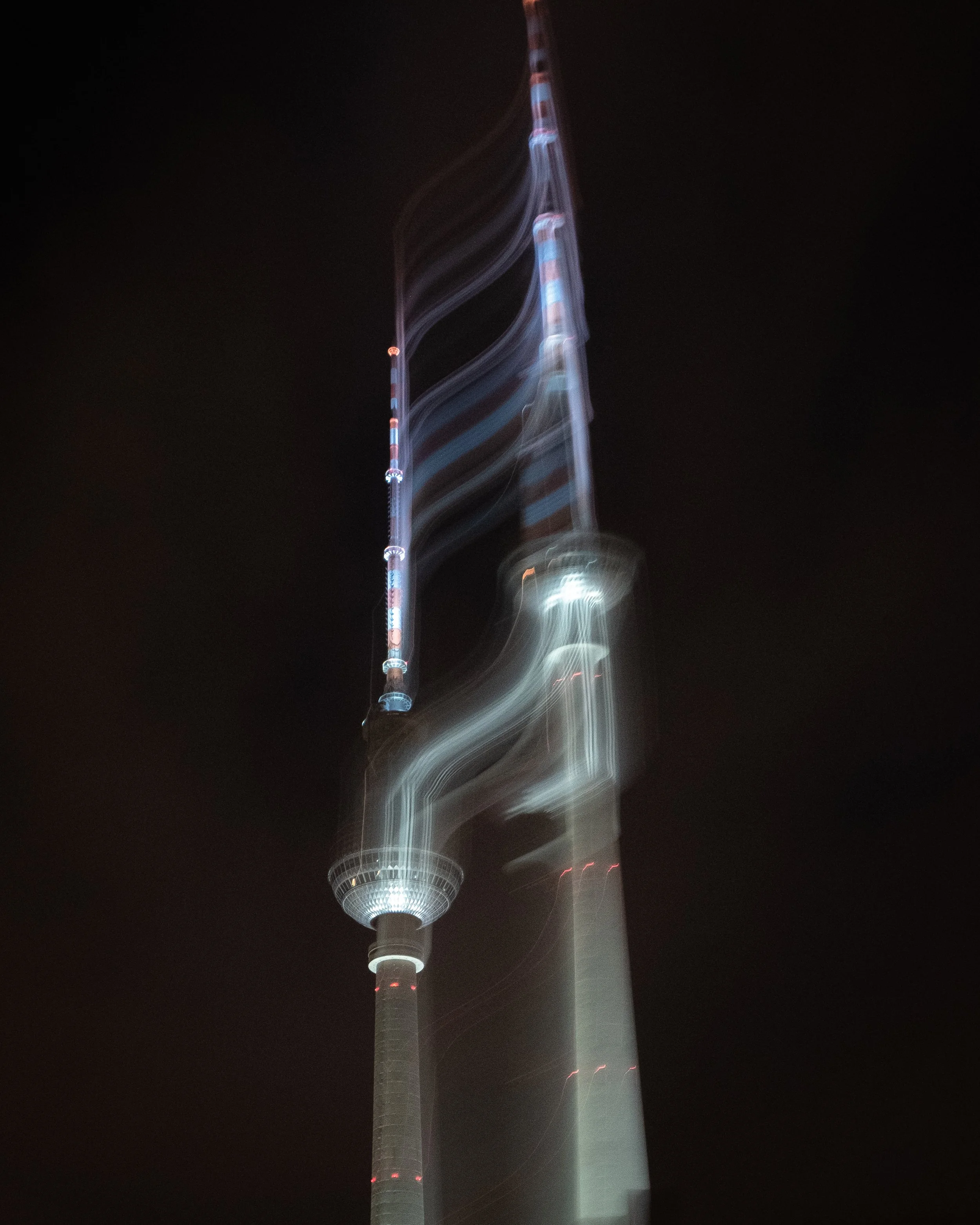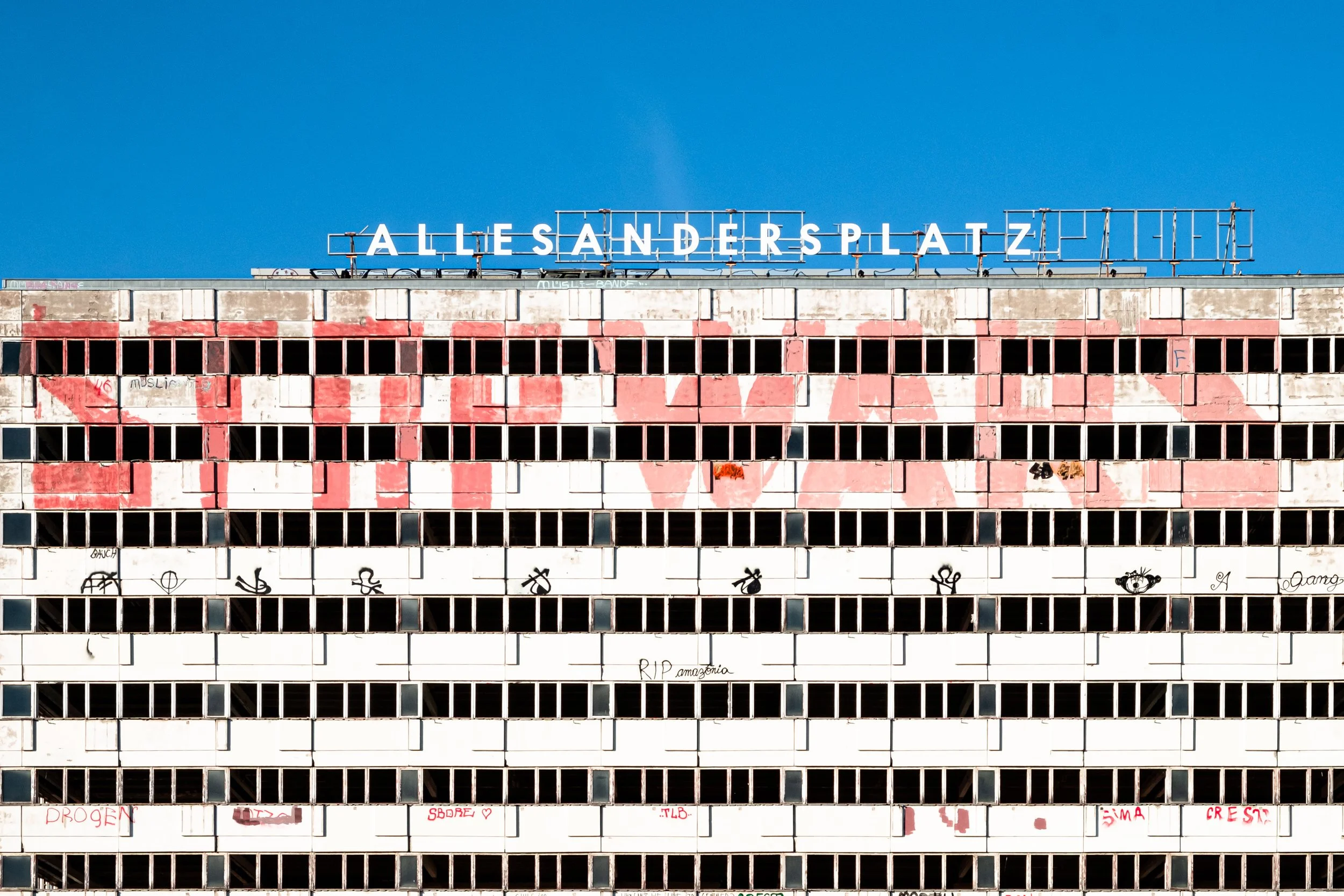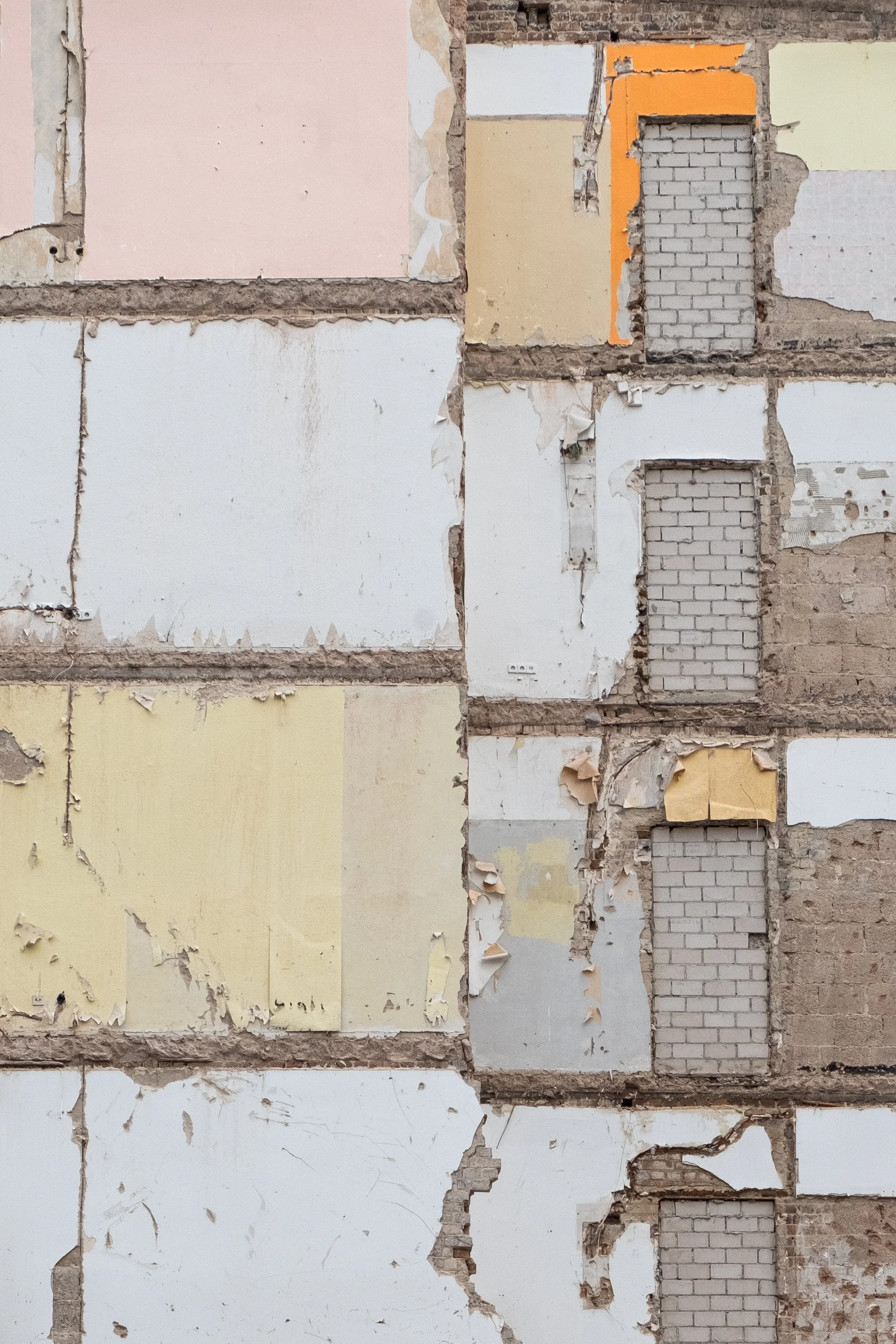












































The “Berlin” series are architectural photographs that documents post war structures in Berlin Germany including many Le Corbusier-designed buildings around the city and focusing on structures utilizing Le Corbusier’s Modulor theory. Le Corbusier believed his Modulor theory could give harmony to everything-from urban spaces, to individual buildings to rooms and objects within the architecture, while functioning as a bridge between the imperial and metric system. In photographing these buildings, many of which are still occupied, Villarreal draws attention to how these mostly residential spaces are designed for specific bodies and movements. Some structures, strikingly surreal, immediately raise questions of the effectiveness of the system and how comfortable and harmonious it might actually be to live in them. While photographing Villarreal experienced a confining feeling present in some of the buildings, from corridors to exterior features that resemble barbed wire. Color elements, whether part of the initial design or added later, seems to make an effort to counterbalance the austereness and yet, you can clearly see Le Corbusier’s influence on more recent buildings around the city. This system of scale and proportion is based on a stylized male figure with his arm raised, referred to as Modulor Man, and can be found on Le Corbusier’s buildings and art. In his efforts to reconcile math the Modulor Man is segmented according to the golden ration and utilizes the Fibonacci progression for the purpose of archiving perfect balance between form and function, beauty and architecture. How an idea or theory can perpetuate due to the myth and mystique generated around it and its “genius” inventor are also questions provoked by this work. Furthermore, in our contemporary context we also consider the problematic nature of architecture designed for a singular ideal form - in the case of Modular theory, a 6ft tall, able-bodied, white male.
Jorge Villarreal’s abstract series of photographs isolates areas of graffiti on remnants of the Berlin Wall still standing today. These digital photo collages surfaced series of dichotomies presented in the gesture of making the wall and transversely in Berliners. Any visitor to Berlin will be struck by the pervasiveness of graffiti and poster-ing around the city; also striking is the city’s way of confronting Germany’s violent and complicated histories-nearly as easily seen and revealed as the graffiti. Villarreal was specifically drawn to this act of marking the Berlin Wall; the contrast between the vibrant mark, text, and images; and the wall itself as a remnant of a barrier, restricting movement and freedom and a physical symbol of the present dimensional texture, where we find paint peeling away, a quality documenting the passage of time. The format of the images creates an awareness of the frame, its geometry, and its edges while the interior compositions imbue a smoothness, fading, the organic, and gesture. Again, we find a dichotomy in the visual language of the work, a method emphasizing the presence of borders, both the edges of the frame and the political border represented within it.